Editor’s Note: In our Letters from the Industry series, we ask food professionals to give us a glimpse into their worlds in an effort to get to know the careers, skills and individuals that contribute to the many facets of the culinary landscape. In today’s entry, food stylist Lisa Homa gives us a behind-the-lens look at the profession of preparing beautiful dishes––for cookbooks and beyond.
——
Since he was about four years old, right around the time he discovered that I have a job, my son would send me off for the day with a hug and say, “Good luck with your pretty pictures, Mommy.” Because at that age, that’s all he really knew about my work––that I made pretty pictures.
What he didn’t know then––but has some vague ideas about now––was everything that went into making those pretty pictures. Which is kind of true of most people. And why should they? Who looks at anything––a cookbook cover, a television show, a cell phone––and contemplates all of the planning, management, decisions, false starts, bad takes, talent and skill that go into making it? But thanks to social media and the ubiquity of “food porn,” more people than ever are thinking about and actively engaged in food photography.
Which is why so many people I meet seem to think I have the most fascinating job in the world. Don’t get me wrong, I love what I do (except for that one day early in my career that I spent gluing sesame seeds on McDonald’s buns). I’m trained in both the visual and culinary arts. I apprenticed for years under the doyenne of food stylists, Delores Custer, and I’ve gotten to work with a crazy patchwork quilt of people from B.B. King to Yotam Ottolenghi. But the moment I tell people I’m a food stylist, the oohs and ahhs, misconceptions and questions come pouring out.
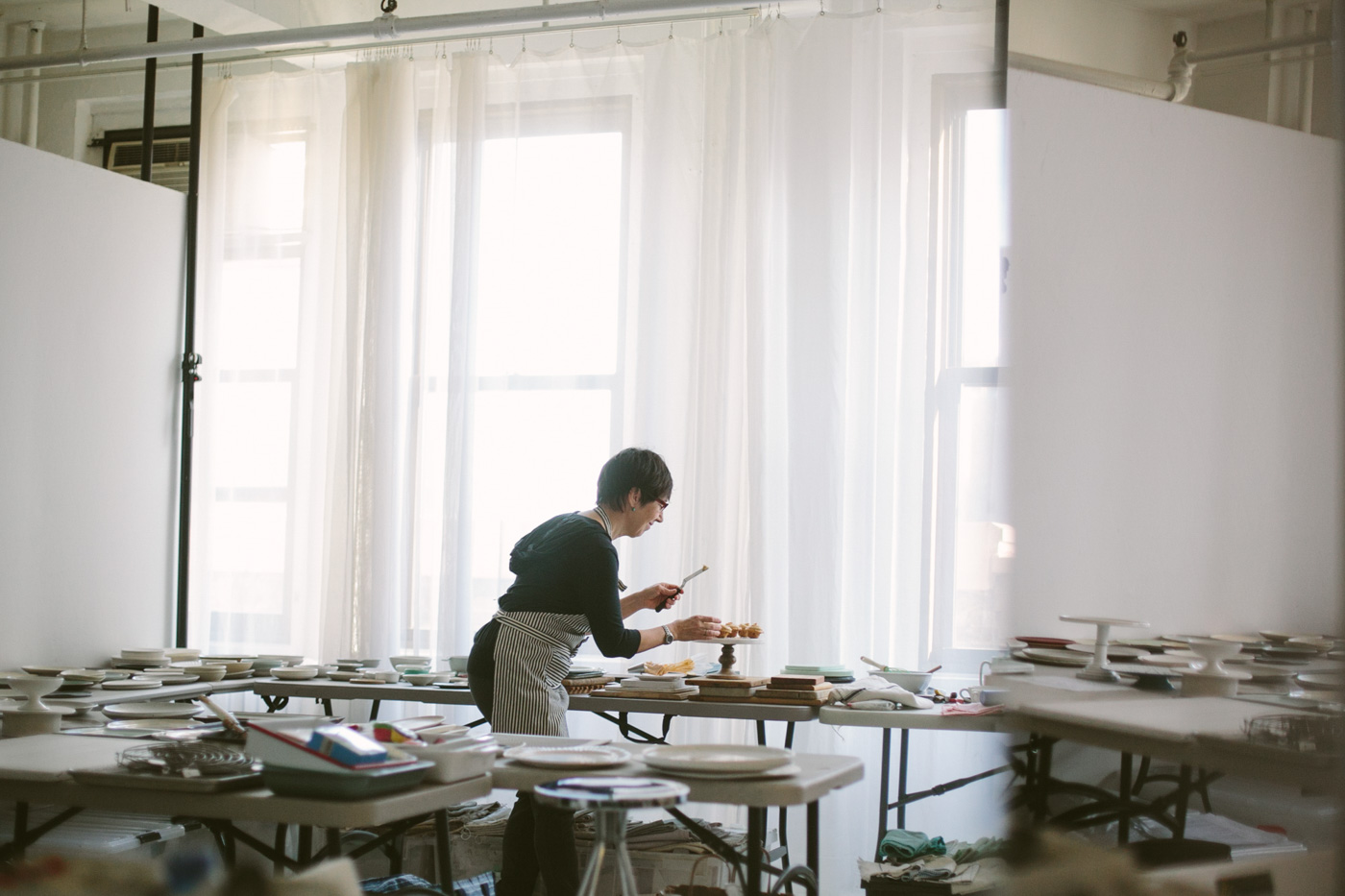
“The ice cream’s Crisco, right?” “The turkey’s painted, right?” “It’s all done in Photoshop, right?” Now and then it is good to have those tricks in your back pocket. Let’s say you’re shooting a mojito for a rum company. Acrylic ice won’t melt or dilute the drink, and helps keep those strategically-placed mint leaves right where you want them; a light spritz of water and glycerin on the glass provides that mouth-watering condensation. But for more than a decade now, the trend has been to present real food in all its genuine glory: burns, crumbs, spills and all, and in natural (or simulated natural) light to better show the food in an authentic context.
Social media has democratized food photography, sure, but it’s also created an even more visible disparity between an image that’s been taken by a professional and one that’s been snapped, filtered and shared. Compare the images on Amanda Hesser’s Food52 Instagram account (which have been professionally and gorgeously shot) to most of your friends’ images on Yelp. The most common question I get is: why this disparity? The short answer: because what looks good on the plate doesn’t necessarily look good on the page.
Food photography is meant to seduce, and like any seduction, the setting, the lighting, the timing and the parties involved all come into play. Whether the shot calls for a perfectly oozing sauce drip, deep caramelization, pancake butter melt, puffy beer head, casual cookie crumble or juicy slices of meat, the team’s objective is to heighten your senses and compel you to eat the page, lick your screen––or at the very least increase your desire to make the recipe.
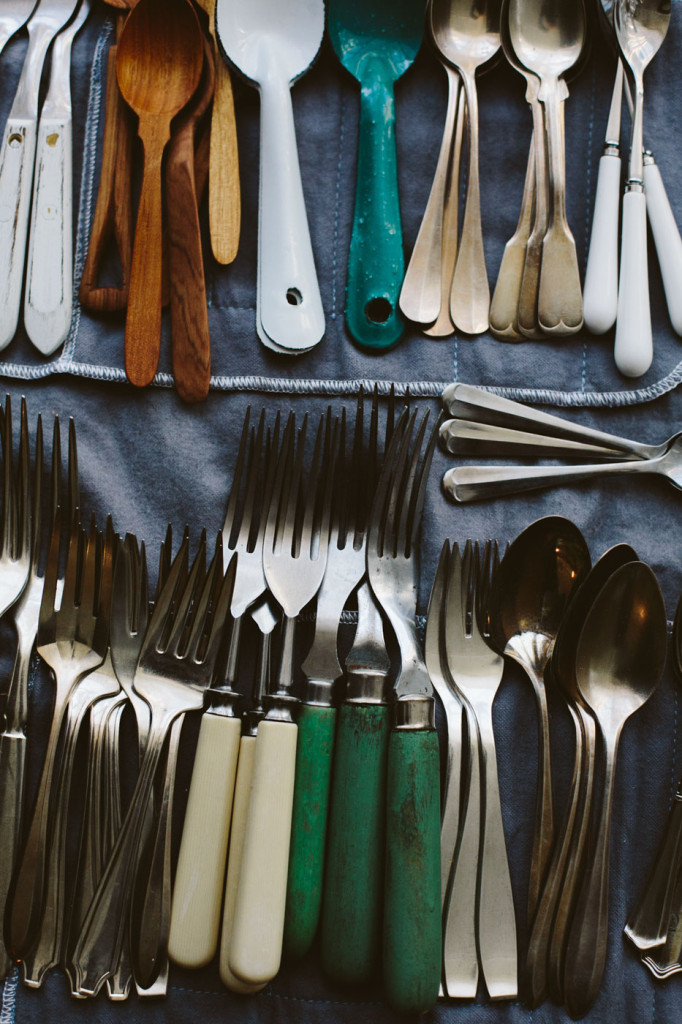
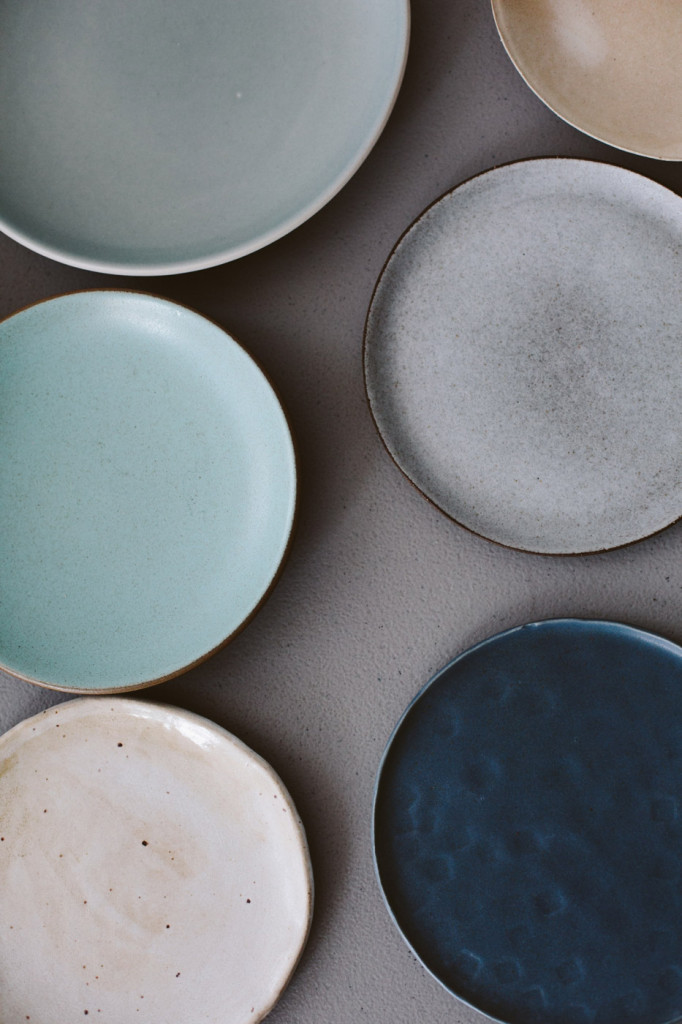
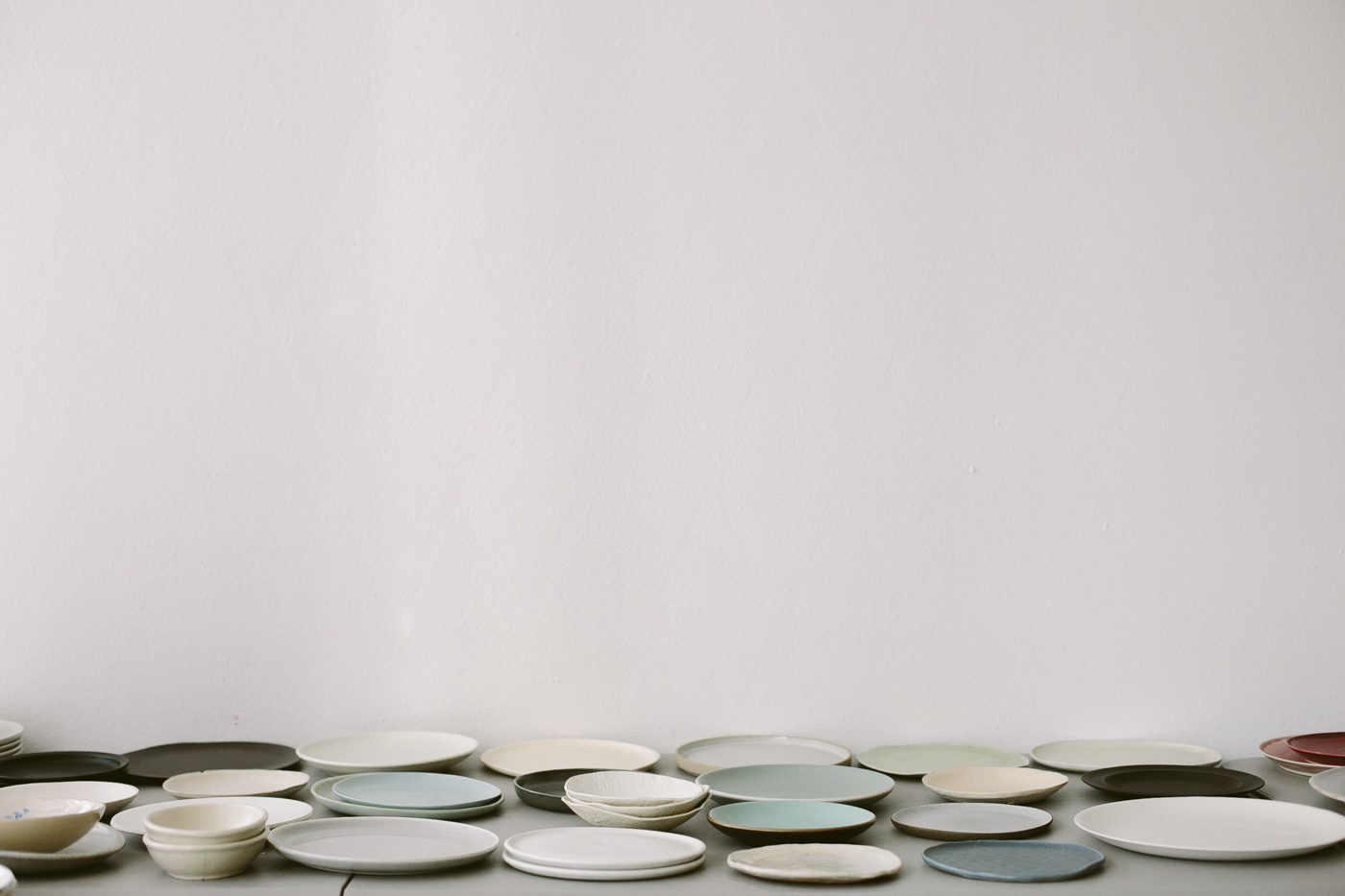
Let’s say you’re shooting a pork roast: ideally you’ll want to get the shot while it’s at its hot, steamy, succulent and sexy best. As I prepare the food (yes, I cook it—that’s one misconception) and style it, everyone from the photographer (no, I don’t actually photograph the food—another misconception) to the prop stylist is thinking about the visual balance, color palette, texture, camera angle, lighting, props to use and props to lose.
And if all these backstage efforts are invisible to the viewer—as they should be—so too are the days of pre-shoot preparation. Making pretty pictures? That’s the last thing I get to do.
A recent shoot for a baking cookbook required more than 50 shots in five days, a formidable challenge and, for the record, a lot of recipes to organize. Days prior to the shoot, I made lists of equipment (Madeleine pans, muffin pans, tart pans, cake pop and doughnut hole pans, eight-inch and nine-inch springforms, heart cutters, ice cream scoops in all sizes), lists of recipes that needed to be prepared in advance, and lists of groceries (four of those: one for my prep, one for my assistant’s, one for items we needed to hand pick, and one for those needing to be ordered online for delivery)––all broken out by grocery department.
The six pages of groceries included 322 ounces of semi sweet chocolate chips, 60 sticks of butter, corn whiskey, gummy worms and out-of-season cherries with stems attached.
Any food stylist worth their salt has developed contacts at every major food vendor in their city. Access to hidden caches of out-of-season provisions is essential as magazine lead times are often months before ingredients are easily available. Thanksgiving spreads are shot in June. Good luck finding fresh cranberries and fully-grown pumpkins at the start of summer.
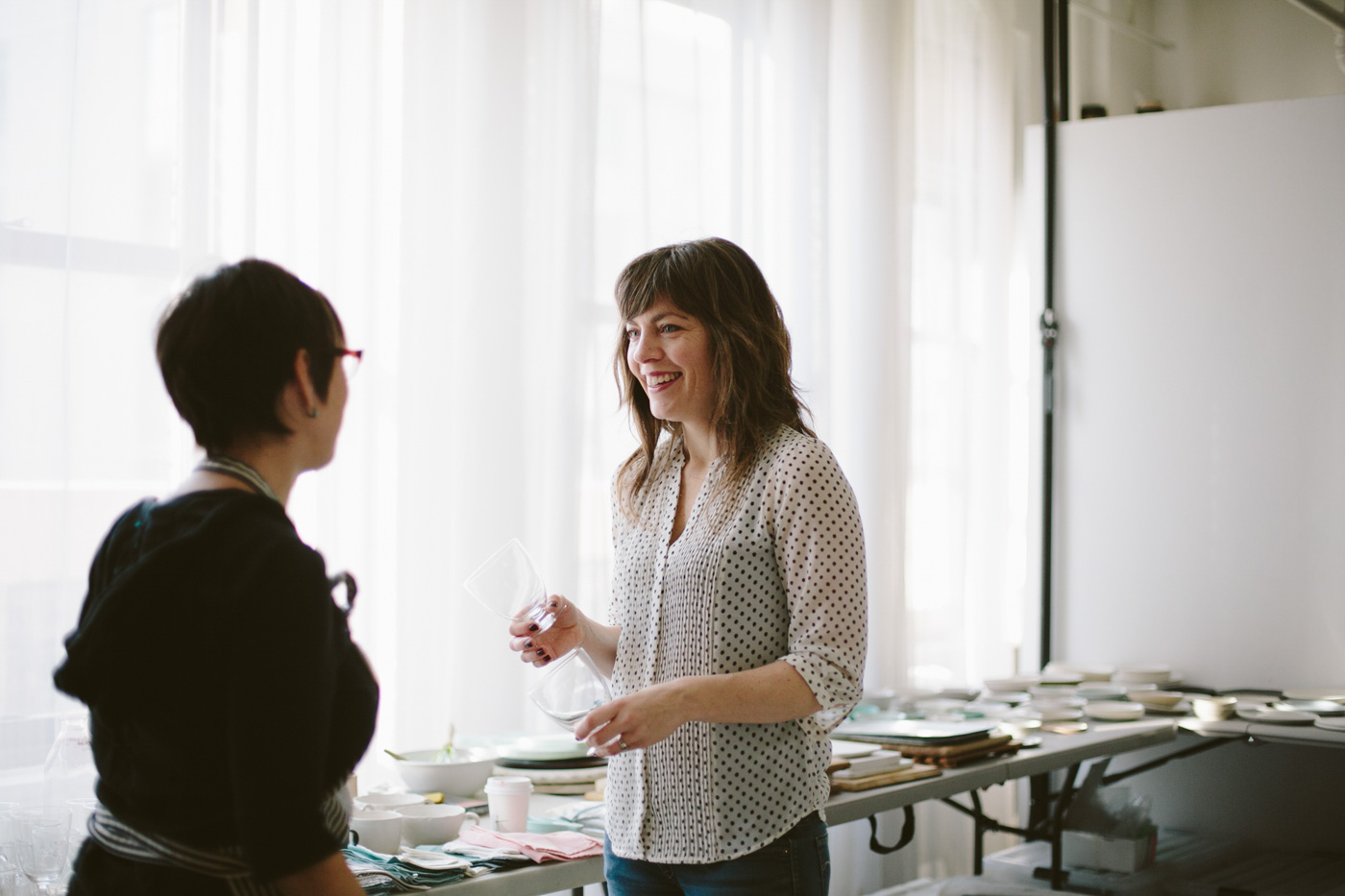
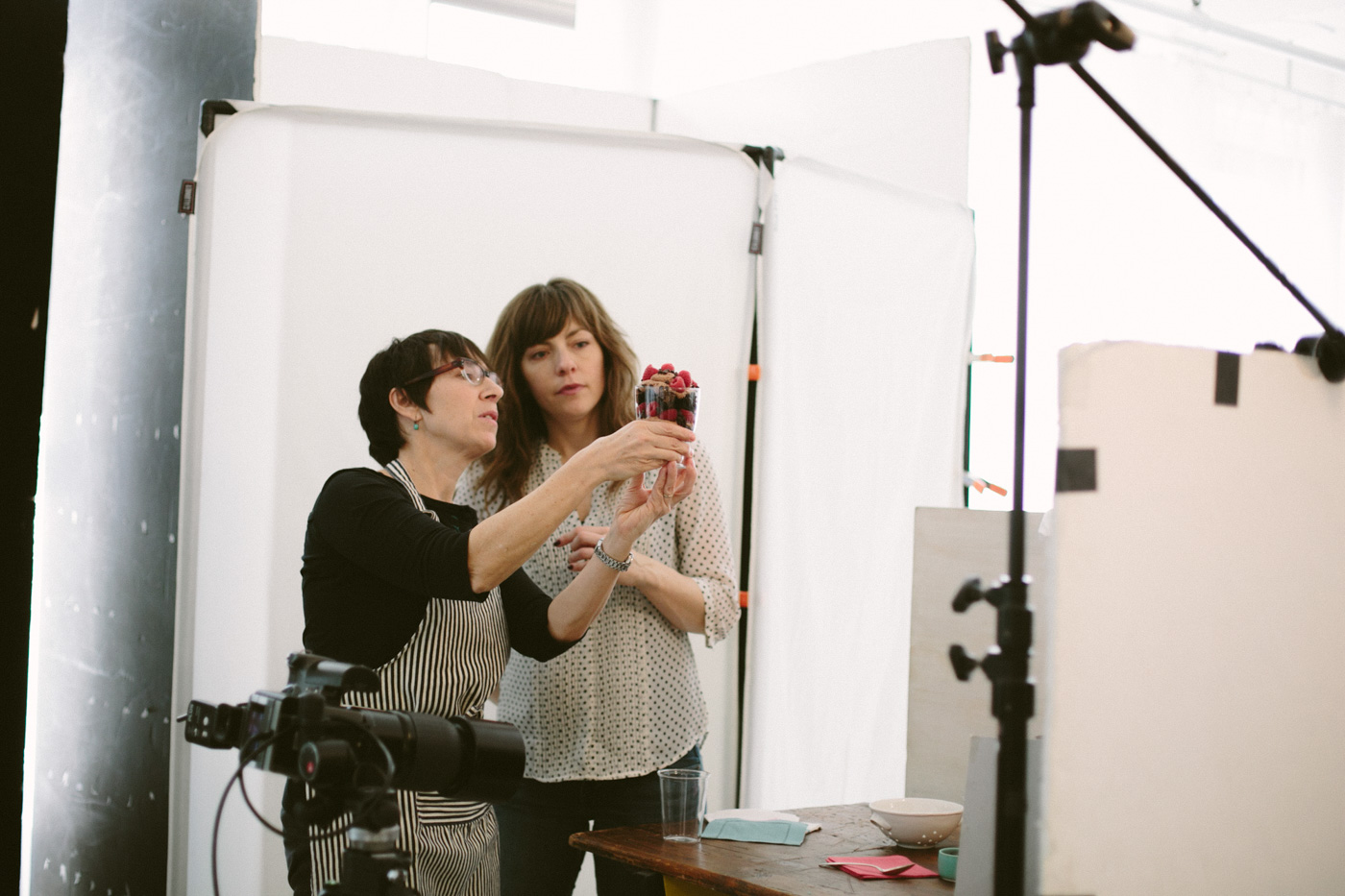
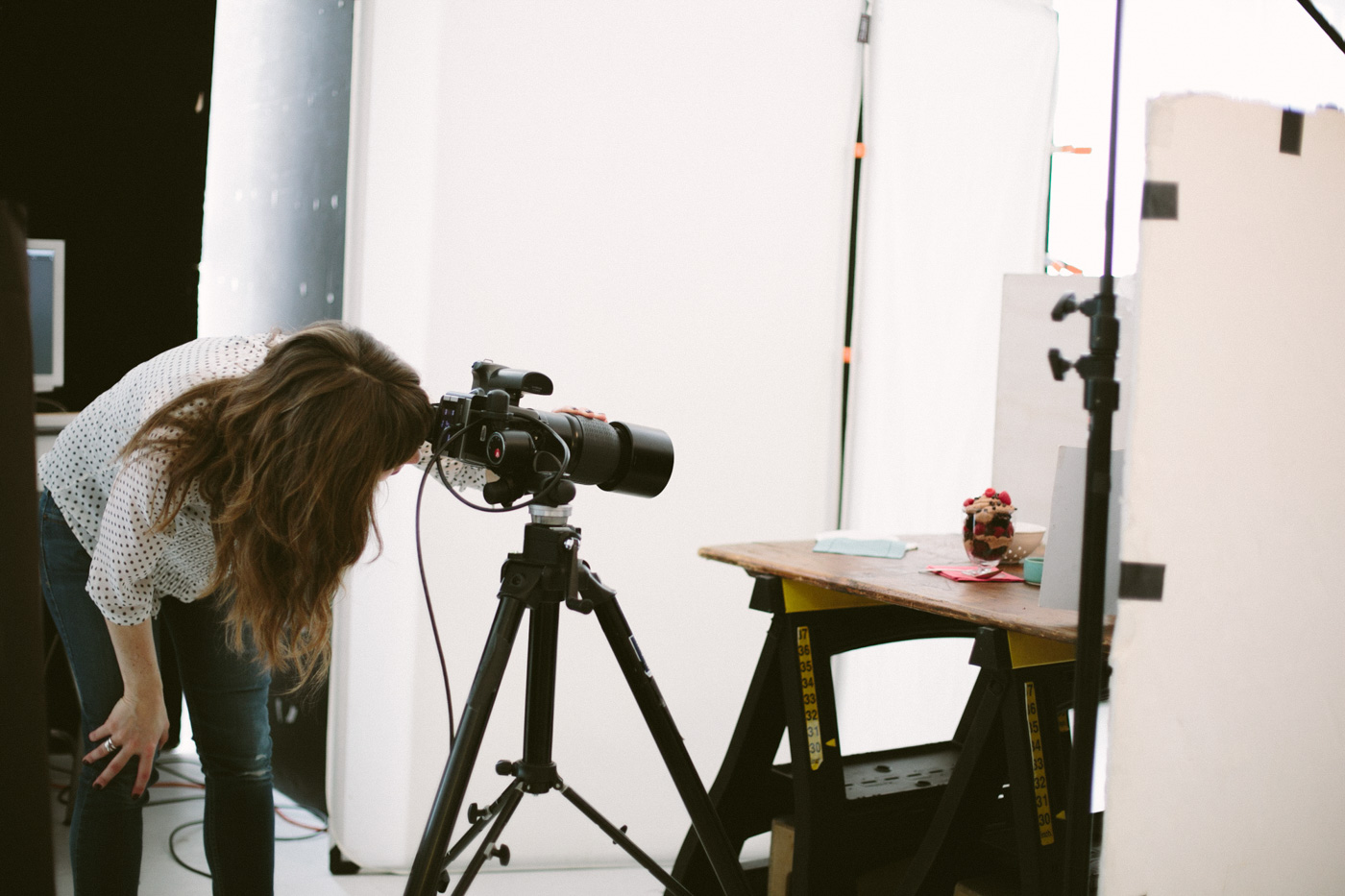
As for those out-of-season cherries, I knew that if I could lay my hands on them they would totally make the shot. After several days I landed one lone bag of cherries and, among them, just a few with their graceful little stems still attached. But that was all I needed. Persistence is a big part of a food stylist’s job description.
The first day of the cookbook shoot began early. While still dark out, I loaded up my rolly cart, oversized canvas bags of equipment, and pre-prepped items, and moved them stealthily down my apartment’s long, narrow hallway trying to exit without waking my family. I’m almost out the door when I hear a sleepy, “Good luck with your pretty pictures, Mommy.”
Shortly thereafter, at a midtown studio, there’s a convergence. Our photographer has already begun choosing lenses, creating a set and conducting lighting tests. Our prop stylist, who’s spent days sourcing tabletops full of forks, dishes, glasses, linens, funky cooling racks, distressed sheet pans and a variety of painted wood, metal and marble surfaces, arrives and unloads.
I have two assistants for this shoot. Both are there, too. We unpack and make a plan for the day, as a flood of considerations and questions not answered in the recipes enters my mind: Should the icing be thicker? Is the ice cream soft enough? Which flavor are we using? Did we under-bake the faux-truffle batter? Don’t forget to line the pans. Pipe the whoopie pie filling. Underbake the brownie batter. Don’t overcook the pumpkin pie. Keep an eye on the white chocolate for seizing. Skip the pecan halves garnish––this isn’t the 1960s––replace with chopped toffee and Maldon salt. Undercook the bananas for the Foster. Strain the custard sauce…
This stream-of-consciousness continues nonstop through the remainder of the week.
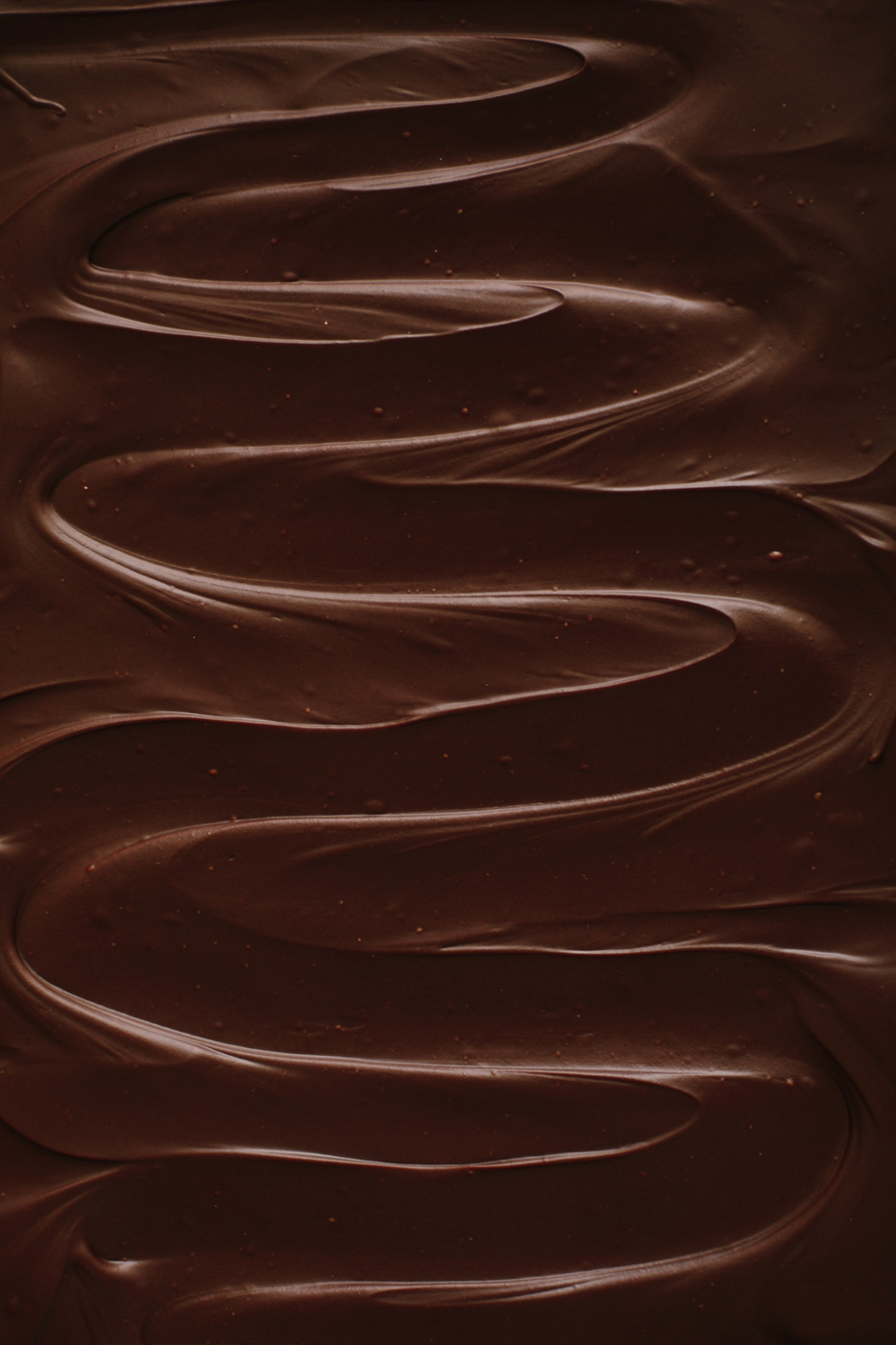
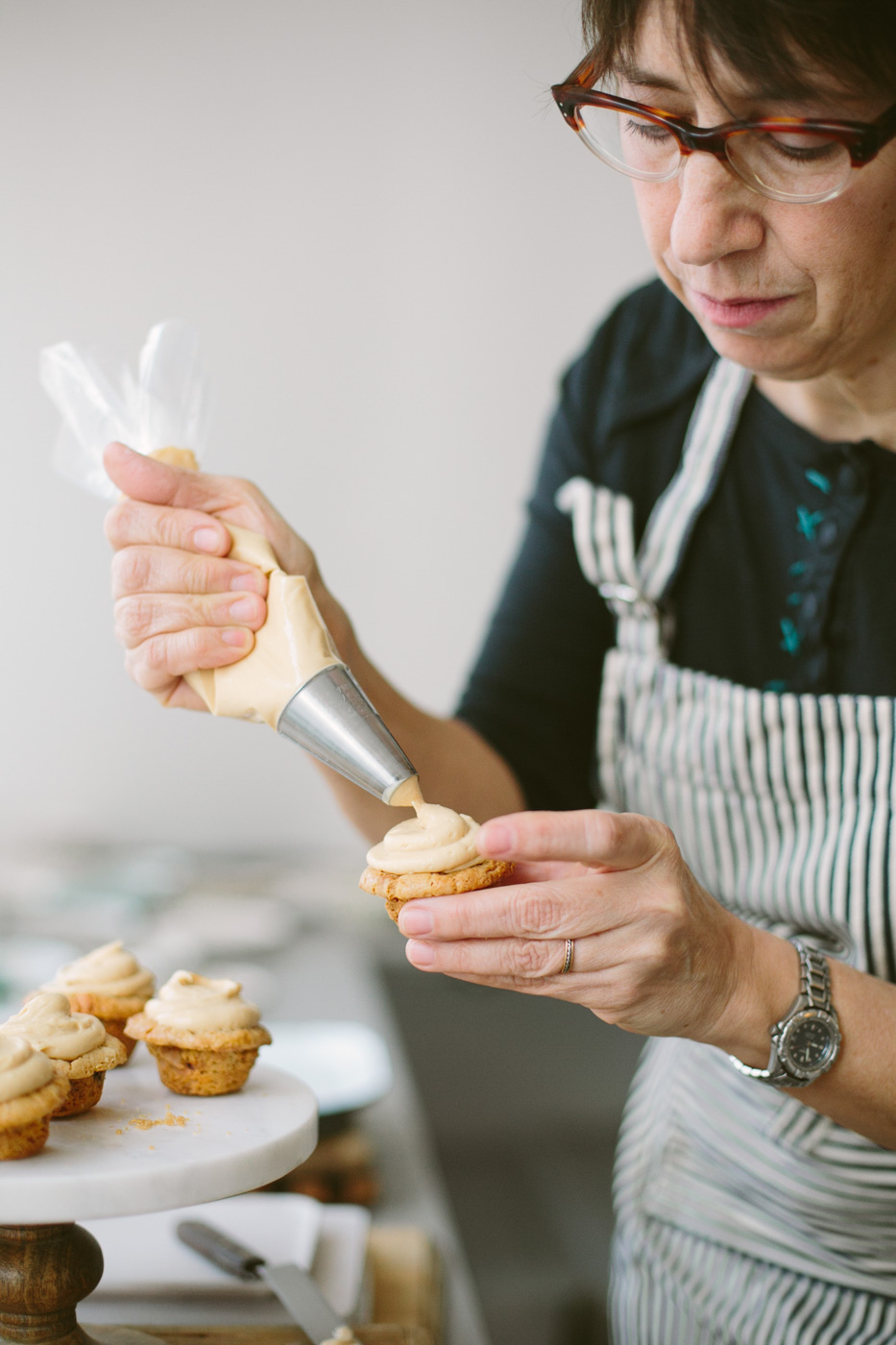
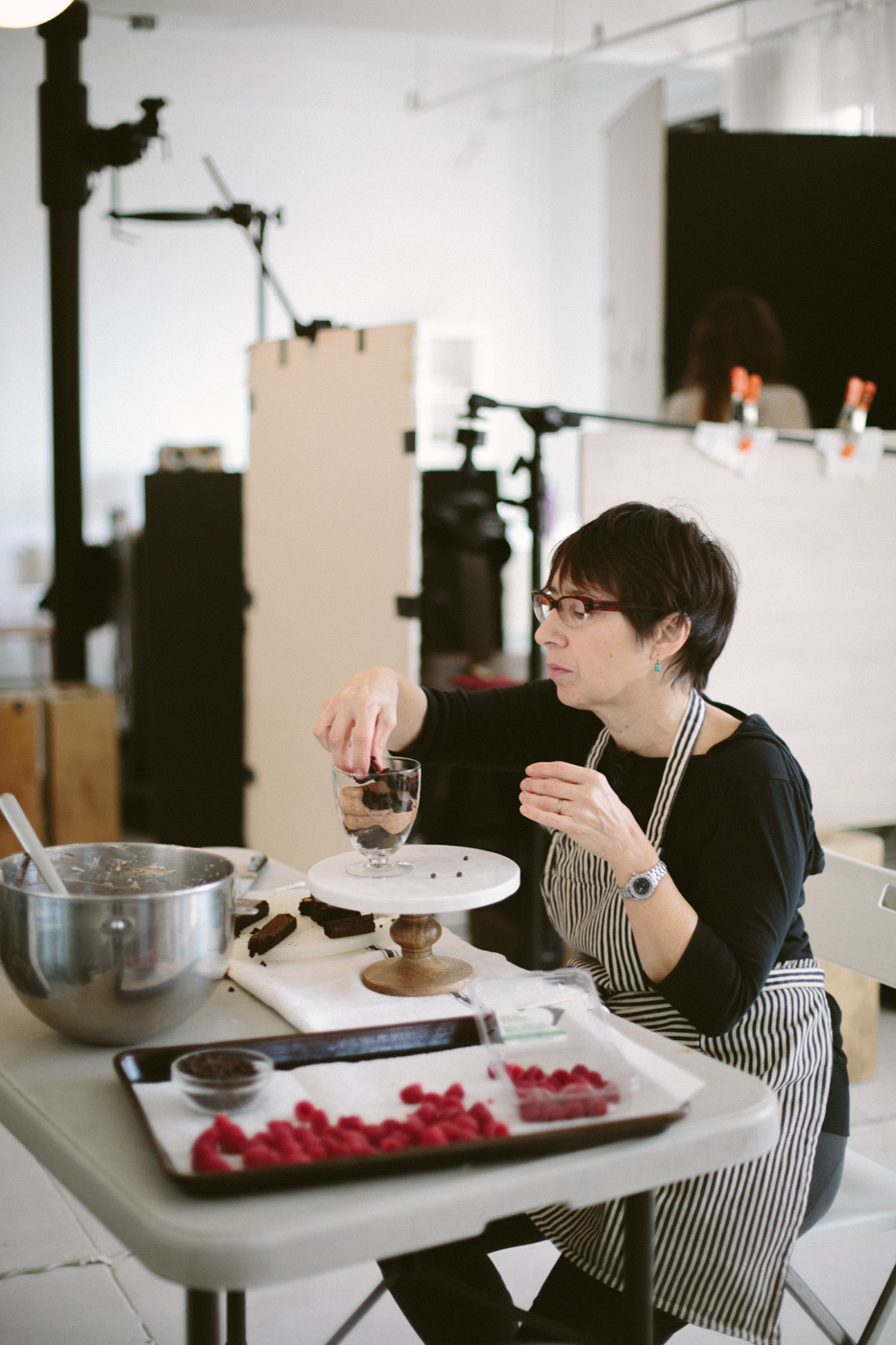
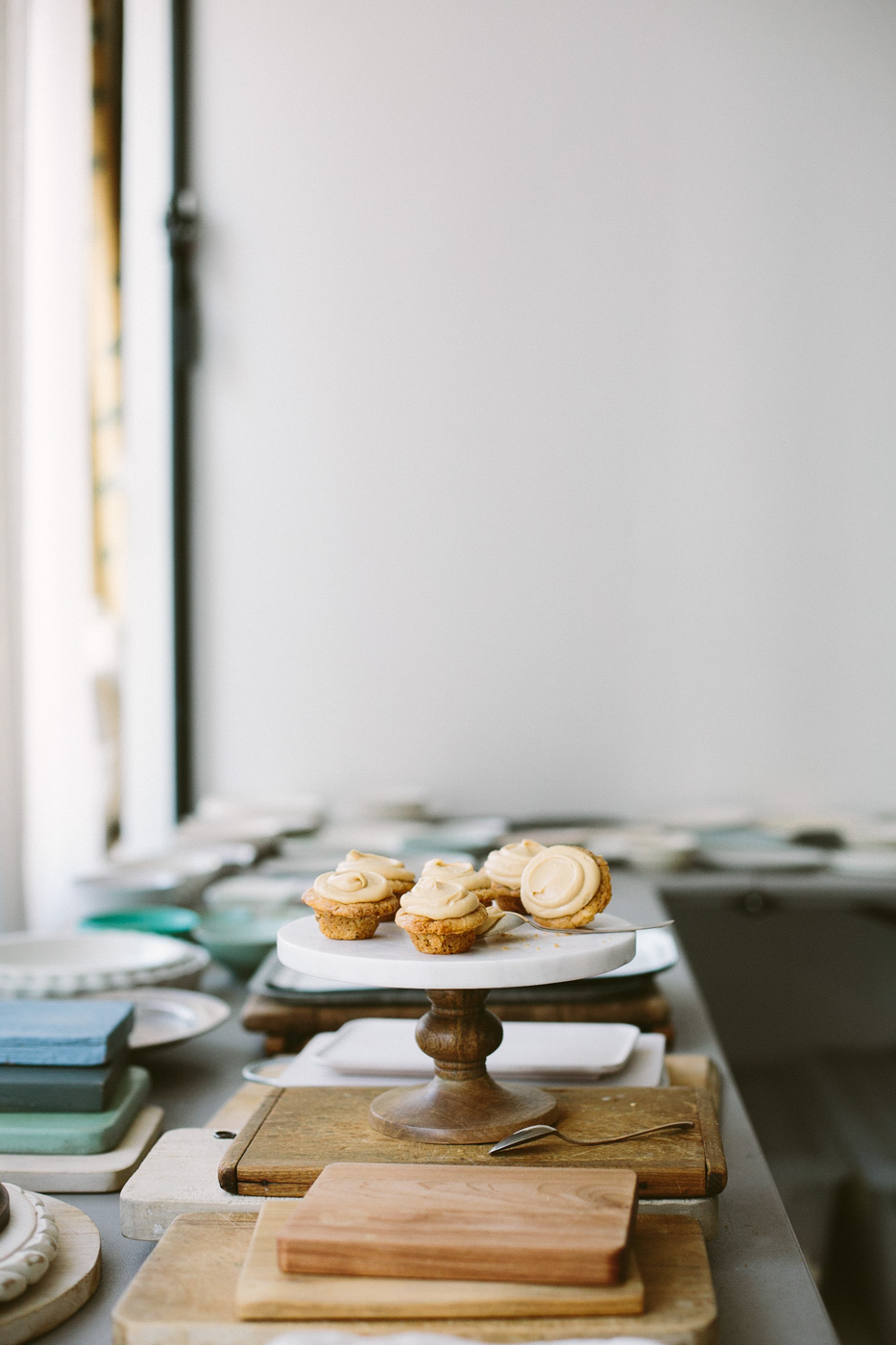
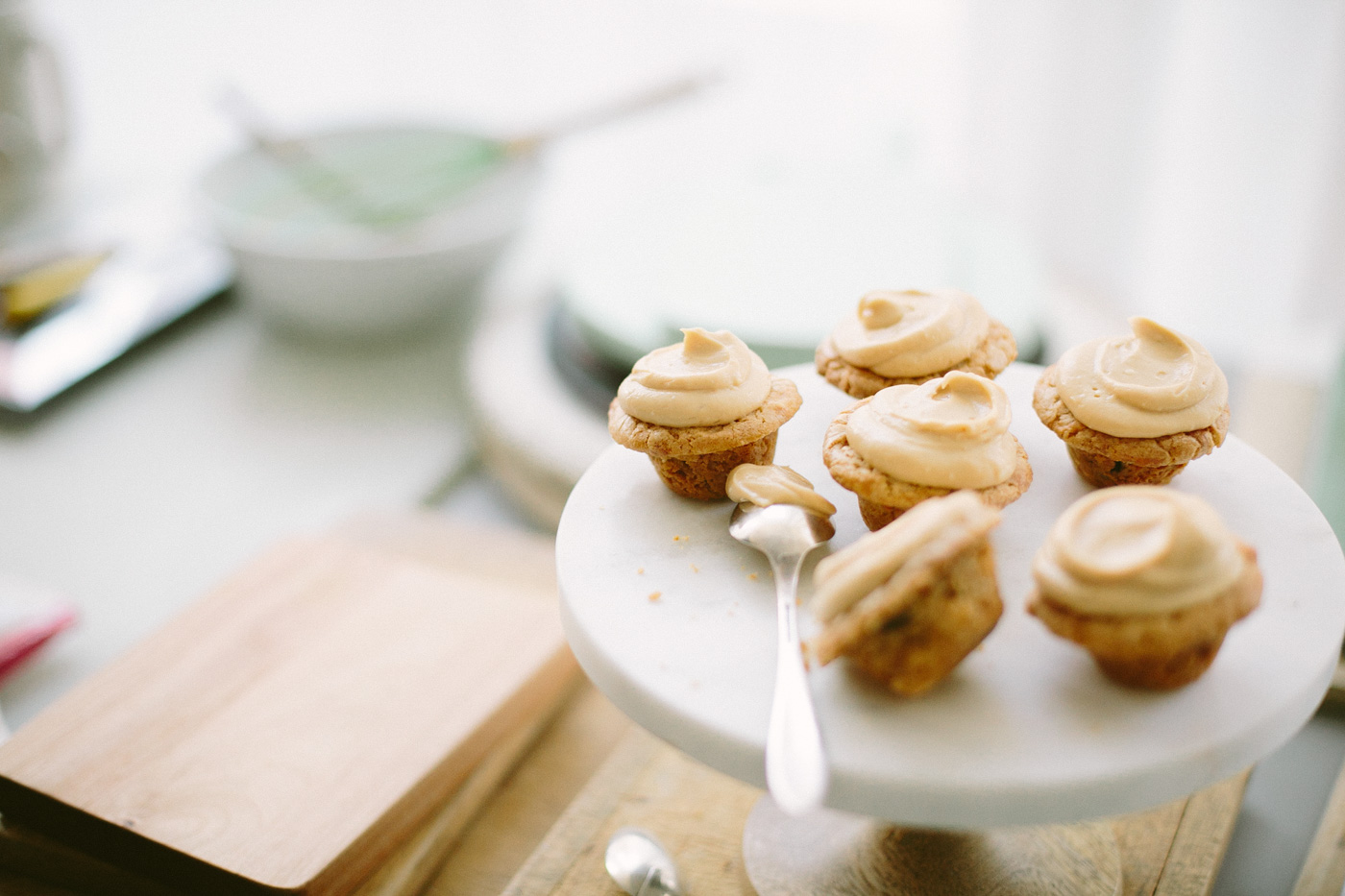
The photographer and I develop a rough shot list. We discuss camera angles: we’ll shoot overhead for the more graphic shots, go lower to capture the depth and texture of a slice of cake, and even lower to grab the dramatic height of a stack of cookies.
Now it’s showtime and the team, which includes the cookbook’s author and editor, waits in anticipation of what I’m going to bring to the table.
Our first shot is of madeleines. I decide we need to take a bite out of one to make it look more inviting. I also add a fine dusting of confectioner’s sugar for texture, but it’s still not quite right. With my fingers I smudge the sugar a little, because we want to keep it real and reality isn’t perfect. This is a risky move. Five people are weighing in; if we don’t all agree I’ll have to set up the shot all over again. And the clock’s ticking. This is where experience and clarity of vision come in handy.
We have consensus: the bite, the sugar, the smudge––all good. The madeleine looks much more enticing. First shot is in the can. But wait––not so fast! The prop stylist adds a fork and moves it around a few times. I get antsy. “Don’t you think it’s a little fussy to eat madeleines with a fork?” She kills the fork and brings over a short but delicate glass of milk instead. Perfect. It’s a keeper. We’re on a roll.
Only 49 more pretty pictures to go.
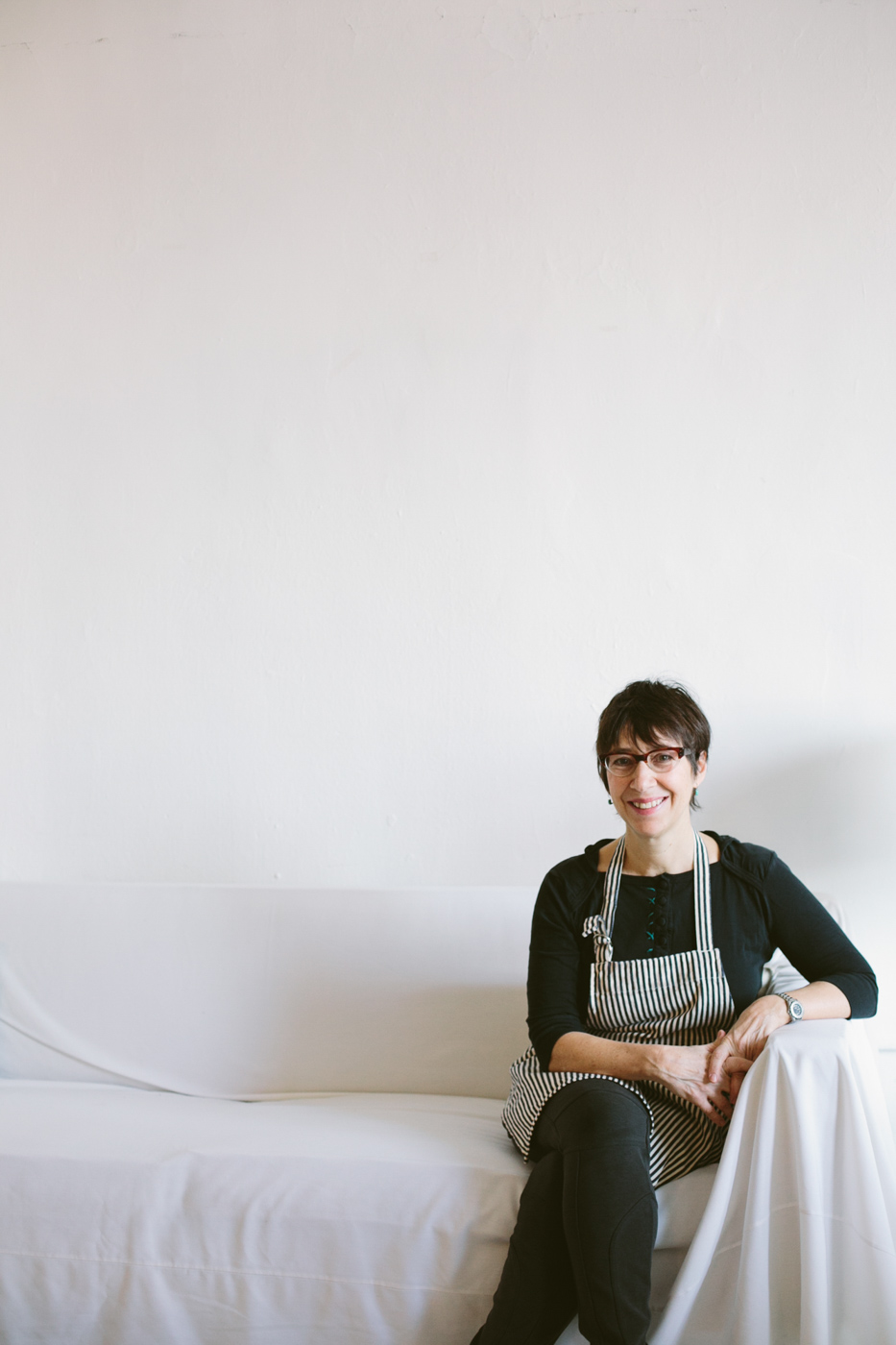
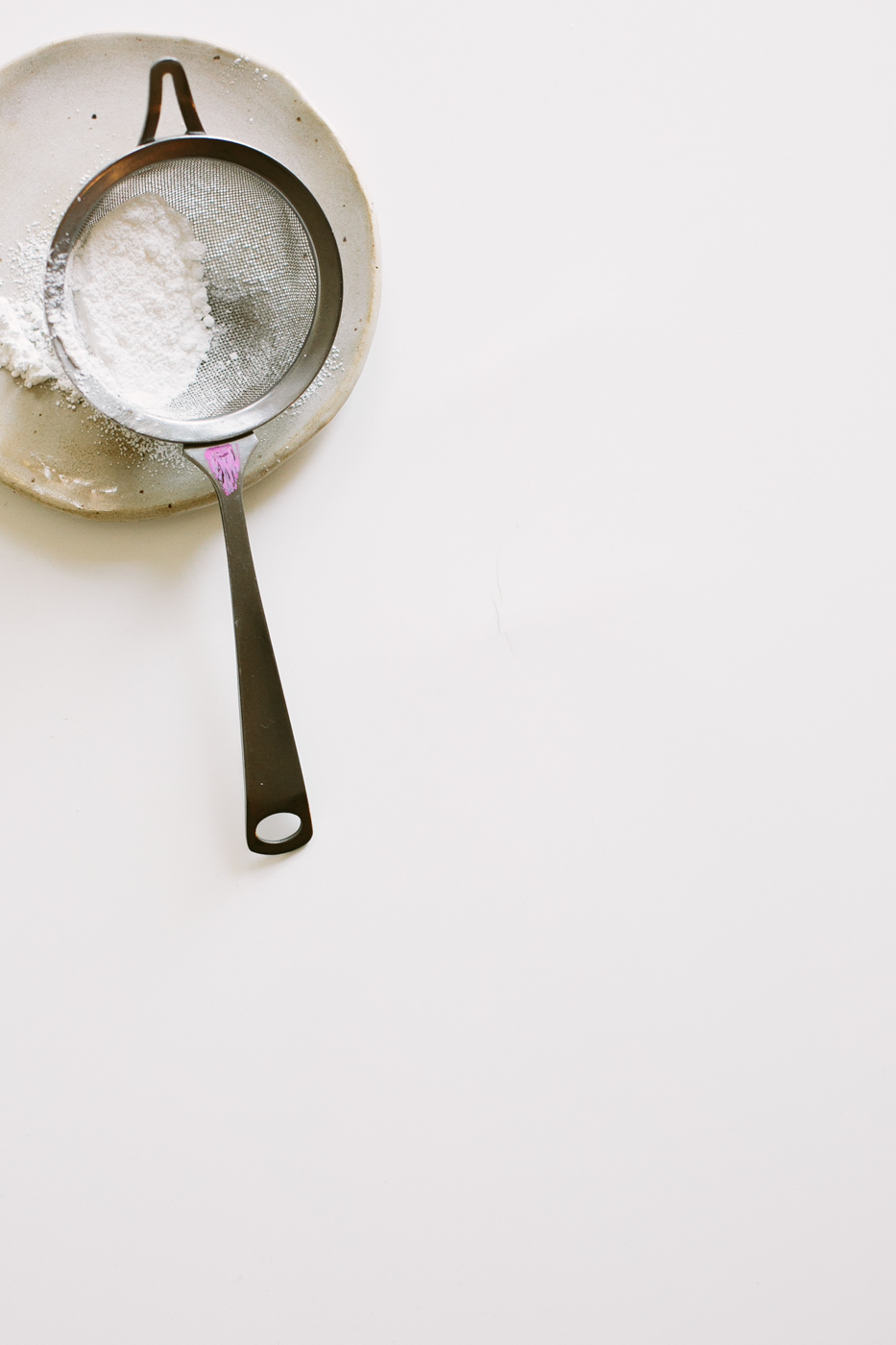





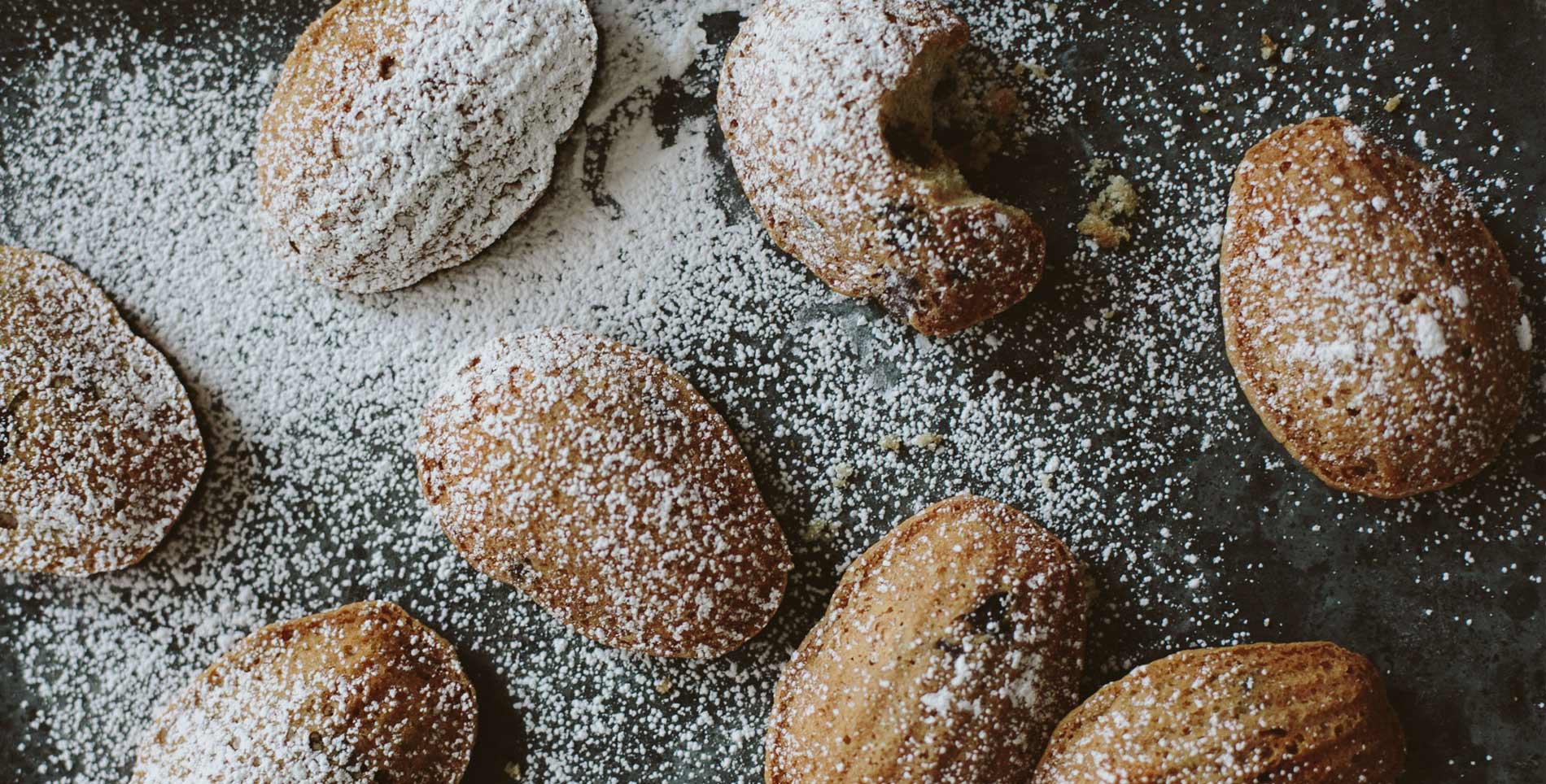

Our comments section is for members only.
Join today to gain exclusive access.